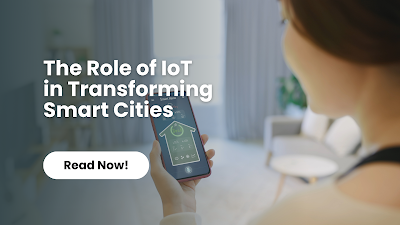As someone who has been deeply immersed in the tech world, I often marvel at the sheer potential of innovation. One topic I find particularly fascinating is how the Internet of Things (IoT) is revolutionizing smart cities. The possibilities here are endless, and every day, new ideas emerge to make urban living more efficient, sustainable, and enjoyable. Let’s dive into this topic together, exploring common questions and concerns and seeing how IoT is reshaping our cities.
What is IoT, and How Does It Connect to Smart Cities?
At its core, IoT refers to the network of physical devices embedded with sensors, software, and other technologies, enabling them to exchange data over the internet. Think of it as an ecosystem where devices "talk" to each other, optimizing processes without requiring direct human input.
In the context of smart cities, IoT powers innovations like traffic management, energy optimization, waste reduction, and even public safety. Cities are essentially transformed into living, breathing systems that adapt to the needs of their inhabitants in real-time.
Why Should We Care About IoT in Smart Cities?
Here’s a personal perspective. Imagine you’re driving through a city with no traffic lights, no coordinated road systems, and endless chaos. Now contrast that with a city where sensors detect traffic patterns, adjust signals dynamically, and guide you to the least congested routes. That’s IoT at work.
Smart cities leverage IoT to:
Improve Quality of Life: From efficient public transport systems to cleaner air, IoT-enabled solutions touch nearly every aspect of urban living.
Enhance Sustainability: IoT helps monitor energy consumption, reduce waste, and manage resources more effectively.
Boost Safety: With connected surveillance systems and emergency response mechanisms, IoT makes cities safer for residents.
Real-Life Applications of IoT in Smart Cities
Smart Traffic Management: One of the biggest challenges urban areas face is congestion. IoT-powered systems analyze traffic flow in real time and adjust signals to minimize delays. For instance, Los Angeles uses IoT to optimize its traffic lights, cutting travel times significantly.
Energy-Efficient Street Lighting: Cities like Barcelona have adopted IoT-enabled smart lighting systems that adjust brightness based on pedestrian activity and ambient light, saving energy and reducing costs.
Waste Management: Smart bins equipped with sensors alert waste management teams when they’re full, ensuring timely pickups and cleaner streets.
Air Quality Monitoring: IoT sensors continuously measure pollution levels, providing actionable insights for governments and citizens to tackle environmental issues.
Public Safety: IoT enhances security through connected cameras, sensors, and communication devices that streamline emergency responses.
Addressing Common Concerns About IoT in Smart Cities
1. Is IoT Secure Enough?
One major concern with IoT systems is cybersecurity. As more devices get connected, the risk of breaches increases. To address this, developers and city planners prioritize secure encryption, regular software updates, and strict data privacy regulations. Personally, I believe the benefits far outweigh the risks when robust security measures are in place.
2. Is It Too Expensive?
While initial setup costs can be high, IoT-driven solutions often lead to significant long-term savings. Reduced energy bills, optimized resource allocation, and decreased maintenance costs justify the investment.
3. Will IoT Take Away Jobs?
Rather than eliminating jobs, IoT creates new opportunities. It shifts focus from manual labor to high-skill roles in tech, maintenance, and data analysis—opening doors for economic growth and innovation.
My Personal Experience with IoT Projects
While working on tech initiatives, I’ve seen firsthand how IoT transforms processes. For example, during a Django project I led, we integrated IoT sensors to monitor and manage environmental conditions in real-time. The learning curve was steep, but the outcome was immensely rewarding—proving that with the right tools and collaboration, the sky’s the limit.
Steps to Embrace IoT in Urban Development
If you’re a policymaker, developer, or even a curious citizen, here are actionable steps to integrate IoT into city planning:
Understand the Needs: Identify the most pressing issues your city faces—traffic congestion, waste management, or safety concerns—and explore how IoT can address them.
Build Partnerships: Collaboration between governments, private companies, and tech innovators is key to implementing IoT solutions.
Prioritize Security: Ensure data integrity and privacy from the get-go to build trust among residents.
Educate the Public: Awareness campaigns can help citizens understand and embrace the benefits of IoT.
A Vision for the Future
The role of IoT in transforming smart cities goes beyond convenience. It’s about building environments where technology works seamlessly to improve the lives of everyone. My vision? A world where no one waits hours in traffic, where energy is used efficiently, and where safety and sustainability are prioritized over everything else.
Let’s keep the conversation going. What excites you most about IoT in smart cities? Share your thoughts in the comments below, and if you found this post valuable, feel free to share it with others who might be curious about this fascinating intersection of technology and urban living.

Comments